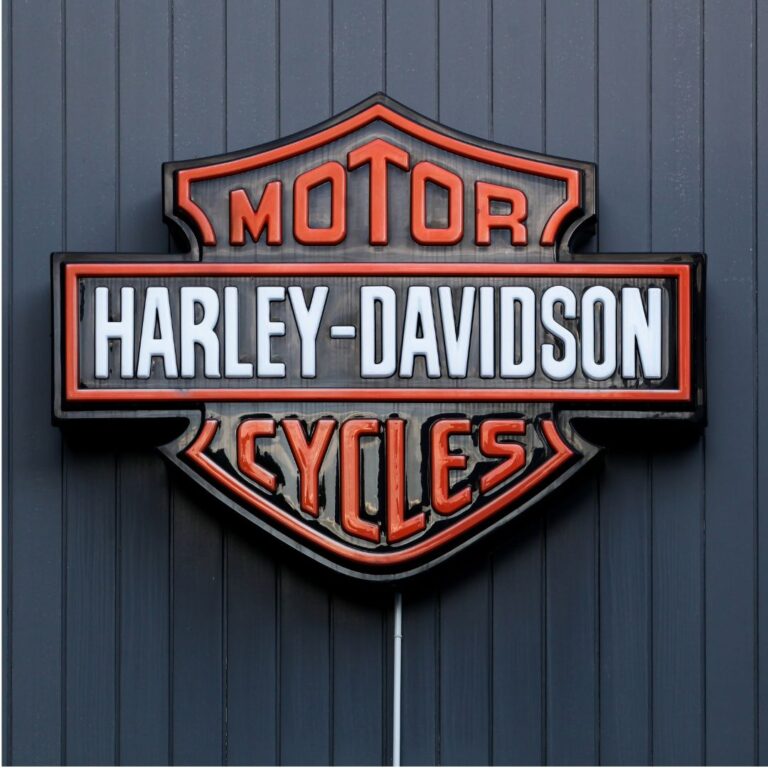Harley-Davidson is one of the most iconic names in the motorcycle industry, symbolizing freedom, rebellion, and the open road. Founded in the early 20th century, Harley-Davidson has grown from a small operation in Milwaukee, Wisconsin, to a global brand synonymous with American motorcycling culture. This article traces the remarkable journey of Harley-Davidson, exploring its origins, milestones, challenges, and the enduring appeal of its motorcycles.
The Early Years: Founding and Inception
Harley-Davidson was founded in 1903 by William S. Harley and Arthur Davidson, who were later joined by Arthur’s brothers, Walter and William A. Davidson. The company began in a small wooden shed in Milwaukee, where the founders created their first motorcycle, which was essentially a motorized bicycle. This initial model was modest, with a 116cc engine, but it marked the beginning of a legacy.
By 1904, Harley-Davidson produced its first production motorcycle, which featured a larger 405cc engine and was showcased at a local motorcycle race. The positive reception led to increased demand, and by 1906, the company had constructed its first factory, a modest 40×60-foot building in Milwaukee. In 1907, Harley-Davidson was officially incorporated, and the same year, it introduced its first V-twin engine, a configuration that would become a hallmark of the brand.
Expansion and Innovation: 1910s to 1920s
The 1910s and 1920s were periods of significant growth and innovation for Harley-Davidson. The company introduced several technological advancements, including the first motorcycle with a fully suspended seat in 1912 and the three-speed transmission in 1915. During World War I, Harley-Davidson supplied motorcycles to the U.S. military, further cementing its reputation for durability and reliability.
By the 1920s, Harley-Davidson had become the largest motorcycle manufacturer in the world, with dealerships in 67 countries. The introduction of the “J” series, known for its powerful V-twin engine and improved suspension, solidified the company’s position as a leader in the industry. The iconic “Bar and Shield” logo, introduced in 1910, became synonymous with quality and performance.
The Great Depression and World War II
The Great Depression of the 1930s posed significant challenges for Harley-Davidson, as it did for many businesses. Despite the economic downturn, the company managed to survive by diversifying its product line, including producing bicycles and boat engines. The introduction of the “Knucklehead” engine in 1936 marked a turning point, offering improved performance and reliability, which helped the company weather the economic storm.
During World War II, Harley-Davidson again played a crucial role by producing military motorcycles, such as the WLA model, for the Allied forces. The company manufactured over 90,000 motorcycles for the war effort, earning it the Army-Navy “E” Award for excellence in wartime production. This period also saw the development of a strong post-war rider community, many of whom were veterans who had ridden Harley-Davidsons during the war.
The Post-War Boom and Cultural Icon
The post-war years brought a surge in demand for motorcycles as returning soldiers sought the thrill of the open road. Harley-Davidson capitalized on this trend by introducing new models like the “Panhead” in 1948 and the “Sportster” in 1957. These models were designed to appeal to a new generation of riders who were drawn to the rebellious spirit associated with motorcycles.
The 1960s and 1970s saw Harley-Davidson become a cultural icon, thanks in part to its association with the counterculture movement. Movies like “Easy Rider” (1969) helped cement the brand’s image as a symbol of freedom and rebellion. However, the company also faced challenges during this period, including competition from Japanese manufacturers and quality control issues following a merger with the American Machine and Foundry (AMF) in 1969.
The AMF Years and the Harley-Davidson Rebirth
The AMF years (1969-1981) were a turbulent time for Harley-Davidson. The company struggled with declining quality, labor strikes, and a tarnished reputation. However, in 1981, a group of 13 Harley-Davidson executives, led by Vaughn Beals and Willie G. Davidson, bought the company back from AMF, sparking a new era of innovation and renewal.
The introduction of the Evolution engine in 1984 marked the beginning of Harley-Davidson’s resurgence. This engine was more reliable and efficient, addressing many of the issues that had plagued earlier models. The company also focused on improving quality control, marketing, and building a strong brand community through events like the Sturgis Motorcycle Rally and Harley Owners Group (H.O.G.).
Modern Era: Challenges and Adaptation
In the 21st century, Harley-Davidson has faced new challenges, including an aging customer base, economic fluctuations, and the need to adapt to changing market trends. The company has responded by diversifying its product line, including the introduction of the V-Rod in 2001, which featured a liquid-cooled engine, and the LiveWire, an electric motorcycle launched in 2019.
Despite these challenges, Harley-Davidson has remained a symbol of American craftsmanship and freedom. The company continues to innovate while staying true to its heritage, producing motorcycles that appeal to both traditionalists and new riders alike.
Harley-Davidson’s history is a testament to its resilience, innovation, and cultural significance. From its humble beginnings in a Milwaukee shed to becoming a global brand, Harley-Davidson has navigated the challenges of economic downturns, wars, and changing market dynamics. Today, it remains an enduring symbol of the open road, embodying the spirit of freedom and adventure that has captivated riders for over a century.


